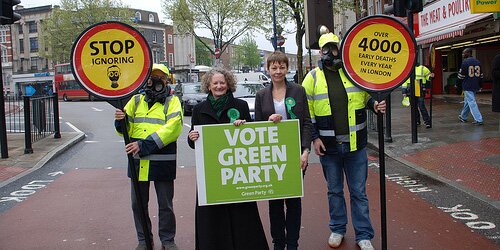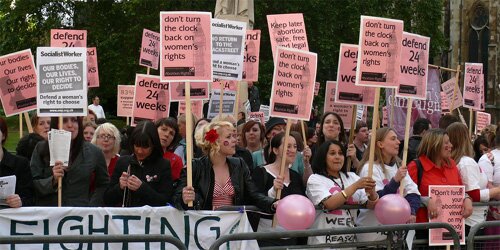Recent Fight the cuts Articles
2012: how the NHS became privatised and the impact that has had
by Alex Nunns
2012 will go down as a cataclysmic date in the history of the English health service. It was the year when the virus of privatisation finally gained control of the cell nucleus of the NHS and began its destruction in earnest.
If you listen to the politicians you wouldn’t know it. According to David Cameron, “we will not be selling off the NHS.” If you believe Nick Clegg, “there will be no privatisation.” They have been able to get away with this deception because the transformation they unleashed is messy. It is happening everywhere, but not uniformly. It is hidden by its very scale and spread.
But take a step back and the patterns are unmistakable. The controversial Health and Social Care Act passed in March 2012 ended the English National Health Service in all but name by abolishing the 60-year duty on the government to provide comprehensive healthcare for all. In its place is not so much a new structure as a process with its own dynamic-that of a snowball tumbling down a hillside.
All across the country treatments that patients used to receive are no longer available to them. Hip and knee replacements, tonsillectomies and cataract operations are among the procedures being restricted, forcing patients to wait longer, suffer in pain, or go private. Surgeries, wards, units and community services have been closed and clinical staff shed as the NHS desperately seeks to make “savings” of £20 billion.
Private GP surgeries near you
With perfect symmetry, the private sector expects to win £20 billion of business from the NHS, according to the corporate finance adviser Catalyst. Huge slices of the health service are being awarded to the highest bidder. With remarkable speed a few gluttonous companies: Virgin Care, Serco, Care UK – have secured dominant positions in the market, gobbling up services from Cornwall to Cumbria. The defenders of the reforms talk about competition driving improvements, but already it is consolidation, not competition, that we are seeing.
There may be a GP surgery near you that is now run by Virgin. Until March 2012 Virgin Care did not exist, although it had been operating under another name since 2010. It now runs at least 358 GP practices. Behind the friendly PR façade of the bearded entrepreneur, patients see a different face, cold and sinister. Take the Kings Heath Practice in Northampton. Since Virgin took it over from the NHS, patients have had to wait up to three weeks for an appointment instead of three days, three GPs have been reduced to one, and three nurses cut to one part-time nurse. And while the company boasts about the surgery’s opening hours, often there are no clinicians present, just an open empty building. Locals complain that Virgin has “brought Third World medical standards to Kings Heath.”
Consolidation is also happening in out-of-hours GP cover. In November Care UK took over out-of-hours services for up to fifteen million people across England by simply buying Harmoni, a company that started as a GP co-operative. The only competition patients see is between their health needs and the profit margin. People in Cornwall know which wins out: an official report in July found the Serco-run out-of-hours service in the county was under-staffed and falsified data to meet targets.
The biggest privatisations are taking place in community health services. The government’s “any qualified provider” policy means whole services must be subject to competition, leading to the demise of NHS-run options. Local NHS bodies have already been instructed to outsource 39 types of service. Dubbed the “39 steps to privatisation,” this covers everything from autism care to wheelchair provision. Even publicly provided vasectomies are for the chop.
The ‘logic’ of privatisation
The logic of privatisation favours a few big winners over the co-ops, charities and social enterprises that act as window dressing for the policy. A prime example came on April Fools’ Day, 2012, when Virgin Care took over a £500 million contract to deliver community services in parts of Surrey. The joke was on Central Surrey Health, a “social enterprise” formed by former NHS staff that was praised by David Cameron and hailed as a model for the Big Society. Central Surrey Health scored the most points in the bidding process, but the contract was given to Virgin because of its financial backing.
Not even hospitals offer shelter from the destructive gale blowing through the NHS. Many Hospital Trusts are being pushed to the financial brink by the disastrous legacy of the Private Finance Initiative (PFI), under which new hospital building was financed by a deal that is akin to paying by credit card, leaving Trusts with crippling debts to the banks.
This has led to some Trusts literally going bankrupt, such as the South London Healthcare Trust which serves over a million people in three hospitals. Its PFI debts, like a black hole, have sucked in surrounding hospitals and units, like Lewisham’s A&E department which is now facing closure. Patients are left high and dry. As for the Trust, it is to be carved up and offered piece by piece for privatisation, with the familiar vultures-Virgin, Serco, Care UK and Circle-picking at the remains.
In a first for the private sector, in February 2012 Circle took over an entire general hospital at Hinchingbrooke in Cambridgeshire. The hospital has since fallen 19 places in the patient satisfaction rankings and its finances have worsened, forcing Circle to ask for a bailout after just six months.
Private income at NHS Hospitals
Combine this with another controversial aspect of the Health and Social Care Act-the ability for NHS hospitals to earn half their income from private patients-and the implications are scary. A chilling investigation by ITV’s Exposure program secretly filmed doctors assuring a private patient that her money would buy priority over NHS patients within the same hospital. It revealed a tragic case where a consultant left half way through a dangerous birth to carry out a private caesarean section. The baby later died. A two-tier health system is not on the way; it is already here.
The drive for profit is insatiable, not least because many of the dominant players in the new market are owned by ruthless private equity firms. Similar funding models to that which led to the collapse of the Southern Cross care-home company are now in the NHS. For example, Hospital Corporation of America, which is entering into joint ventures with NHS hospitals, is majority owned by three private equity firms including Mitt Romney’s notorious Bain Capital.
All of this comes before the most high-profile part of the Health and Social Care Act has even been fully implemented-the replacement of PCTs with Clinical Commissioning Groups (CCGs). Sold to the public as “giving power to GPs,” this transfers responsibility for spending £60 billion of public money to largely unaccountable new groups, who will in turn outsource the work to privatised “commissioning support units”-allowing the private sector to decide how taxpayers’ money is spent. If that sounds complicated, it is. David Nicholson, the head of the health service, fears it could end in “misery and failure.”
The Labour party, after its record in government of opening the way for privatisation, has changed tack in opposition, repeatedly pledging to repeal the Act and scrap the market if elected. These are important commitments that it must be held to.
But the quantity of contracts currently being signed may take the NHS over a tipping point, where the “facts on the ground” cannot be reversed. That is why it is crucial to monitor, expose, slow and disrupt the destruction of the NHS now, while there may still be time to save it.
—
Alex Nunns is an NHS campaigner, writer and editor whose blog about a job offer from Care UK went viral in July 2011. This article was sponsored by the NHS Support Federation
Nick Clegg’s speech does not deserve to be taken seriously
When a politician says a current item of spending is unsustainable, you can be almost certain that they are lying. Last time round it was public sector pensions, ministers claiming something had to be done, when Lord Hutton’s report was clear that overall costs were due to fall, not rise.
Yesterday Nick Clegg claimed that the welfare system was in danger of becoming unaffordable, with the economy tripling in size since the 1970s while welfare spending has gone up seven-fold. This might well be true, but this ignores two key points: first that spending on unemployment/sickness benefits amount to only 3% of GDP, and second that spending on welfare overall, including pensions, has levelled off in recent years.
Clegg’s entire speech was, as could be expected from someone desperately trying to claim he’s done anything other than prop up a Conservative government for the last two and a half years, filled with arguments along the same lines.
Straw men abounded: there are apparently some on the left who think benefits are an automatic right with no responsibilities, and that it’s oppressive and discriminatory to assume those with health problems or a “difficult background” can “make something of their lives”. To call this rich from a politician who’s gone along with the introduction of a work programme that doesn’t work, and who has done nothing to hold ATOS to account, even when they have offices in buildings with limited disabled access, risks understating the levels of chutzpah of involved.
Even more laughable, which takes some doing, was Clegg’s claim that opposing the 1% rise in benefits for the next three years doesn’t “make rational sense”. As Paul at Though Cowards Flinch points out, it made perfect rational sense last year to George Osborne when he decided benefits should rise at the same rate as inflation; then he wanted to protect those “who are not able to work because of their disabilities and those, who through no fault of their own, have lost jobs and are trying to find work”. What had changed this time?
Simply that Osborne and friends felt they were on safe ground in smearing every benefit claimant as a scrounger, and so could put up a political dividing line between themselves and Labour. Clegg, naturally, went along with it, and much of his speech recycles the exact same language used by the Tories, to the point where he aped Cameron’s “without hope or responsibility/aspiration”.
The one point he made that did have something resembling a kernel of truth was the observation that “[W]hen two-thirds of people think the benefits system is too generous and discourages work then it has to be changed or we risk a total collapse in public support for welfare existing at all”.
This though is based on the misconception that out of work benefits are generous; I don’t think I’ve seen a single columnist or newspaper editorial point out that as Jobseeker’s Allowance for the over 25s is currently £71 a week, if Osborne’s uprating takes place those out of work can look forward to an extra 71 pence a week from next April.
It’s true that when other benefits are taken into consideration alongside JSA or ESA that the picture isn’t quite as bleak; housing benefit, council tax benefit and child benefit for those who have a family alter the picture somewhat, but they don’t change the fact that the system is often very far from generous, and will be even less so once the £26,000 cap comes in, ignoring exceptional individual circumstances.
Much of the rest of the speech was given over to claims of how everything the Lib Dems have done in coalition has been rooted in the centre ground, a sure sign of desperation from a party which gained support at the last election because, err, they were rightly seen as being to the left of centre.
Welfare spending is the most important infrastructure investment we can make

At the Autumn Statement we were told that the Chancellor is increasing spending on infrastructure whilst cutting spending on welfare. Such statements are confusing “infrastructure” for “lumps of rock”.
There are two reasons that you would increase spending on infrastructure. The first is that you believe that the spending itself will be good for the economy: the money will create jobs, the newly employed people will buy new things, shops will employ more people, etc.
The second reason might be that you believe that the underlying framework of your system could be more efficient. The classic example would be that late trains cost people time working, so you invest in better train lines.
However, in practice, I see very little notable difference between what Osborne sees as ‘welfare’ and what he sees as ‘infrastructure’ – other than who it is for. What the Chancellor calls infrastructure, I could call corporate welfare.
Let’s take a specific example: the Treasury is going to pay to upgrade our broadband network. They are doing it so that businesses can have access to faster internet. If the state didn’t pay for this, then these companies, if they really need it, would eventually arrange it themselves. So this is just a whacking great subsidy to them.
And you say “welfare”, I say “social infrastructure”.
The basic underlying framework of our society is not just roads, railways and wires. More important than any of these are the institutions which make our civilisation. And the welfare state is key to this.
If the public sector spends less time caring for old people, then this often means that relatives (almost always female relatives) end up taking on those caring responsibilities. Now, what costs the economy more hours of labour – a late train, or the need to care for a sick elderly relative? Social care is as much a piece of economic infrastructure as are train lines or high speed broadband.
Likewise, if we cut social services for young people, then we see a huge financial cost to society – both in the short term in increased crime rates, and in the long term in a less well educated, less well adjusted generation growing up.
There is no particular economic reason to cut spending on social infrastructure and increase it on physical infrastructure – other than an ideological opposition to the welfare state.
——
A longer version is at Bright Green Scotland.
Reclaim the Future event calls for debate on austerity

Since the financial crisis broke in 2008 we have seen a rising tide of protest, revolutions and resistance across the globe.
One of the driving forces of these movements has been a desire to change the future: to reject the idea that we have no options outside of the logic of never ending austerity, declining living standards and the loss of public services.
‘Up the Anti’ is a one day conference for reflection, discussion and debate on how we lay claim to the future that we want and deserve. It will host an eclectic mix of sessions, ranging from in-depth seminars and debates to participatory, facilitated discussions and workshops.
The aim is to make the day as participatory as possible, encouraging members of the audience to expose their concerns and suggest their solutions to the problems we hear about on the media every day.
The event is a genuine product of the social movements we have seen in the UK, being put together by a plurality of groups, websites, publishing houses, and networks. It is sponsored by New Left Project, Ceasefire magazine, OT newspaper, Anticapitalist Initiative, Red Pepper magazine, Pluto Press and Globalise Resistance.
Speakers will include, among others, David Graeber, Hillel Ticktin, Dan Hind and Mark Fisher, as well as the editors of What We Are Fighting For: A Radical Collective Manifesto (Pluto Press, 2012).
The conference after-party: ‘Stand Up… Against the Government’, will take place at Drapers Bar from 8pm onwards, featuring stand-up comedians Kate Smurthwaite and Chris Coltrane, and up-and-coming blues musician Sean Taylor.
Tickets range from £3 to £10: uptheanti.org.uk
1 December 2012, 10.30am
Queen Mary University, Mile End, London
Domestic violence services in “worst crisis” on budgets

Services aimed at helping vulnerable and abused women are facing million-pound cuts as local authorities slash their budgets, leaving the womens’ sector in “the worst crisis it has ever been” in.
The top 152 councils in England are cutting spending to women’s services by an average of £44,914 each compared to budgets since 2009. Services include women’s refuges, rape crisis centres, domestic violence outreach, services for ethnic minority women, trafficked women & women in prostitution.
The cuts come in spite of a report conducted last year that found incidents of domestic violence had increased by 17% over the recession- to which experts attribute the rise. Women’s Aid report that around 320 women are turned away from domestic violence refuges each day.
Vivienne Hayes, chief executive of the Women’s Resource Centre remarked that due to the impact of the cuts, the women’s sector was in “the worst crisis it has ever been,”
“So many service providers have been forced to shut down, are not able to provide the services to fit the demand, or are having to turn women away.”
Chief executive of domestic violence charity Nia, Karen Ingala Smith said that vulnerable women may be left with “nowhere to go” once the cuts impact, and there was concern that this could lead to the deaths of some women at the hands of violent partners. It is estimated that up to two women a week are killed by their partner in Britain.
The 101 councils who responded to questions on spending through a Freedom Of Information request from the Huffington Post revealed that £5.6m of cuts have been made to services for vulnerable women when compared to 2009/10 spending. London alone has cut 1.9m.
Mary Mason of Solace Women’s Aid warned that cuts to domestic violence services could also increase the cost of the crime- £5bn in England alone. “Early intervention and support works- for every £1 spent we save £8 to statutory services.”
“Yet all our services are full, all have waiting lists and all services are forced to restrict time spent on supporting women and children.”
Liberal Conspiracy spoke to Glenda*, who was referred to her local rape crisis centre after being brutally attacked in October 2010. She received one on one counselling, which she regards as “an important part of my recovery.”
“It was good just to have somewhere safe to go where I could be with someone who understood. [They] helped me carry on surviving.”
Domestic Violence services have also warned that the true extent to the cuts may run much deeper- changes to housing benefits and reforms to universal benefit mean that some women may be unable to leave abusive and violent partners.
Barnet Council’s Labour group deputy leader Barry Rawlings explained that Refuges may have to close due to benefit reforms. “Refuges are vital for the safety of women and children and rely on housing benefit to make them viable. The concern is the payment will be direct to the claimant who may well have moved on from the refuge by the time the payments come through and the refuge will never get the payment.”
Vivienne Hayes added that “This failure to address the causes and consequences of women’s inequality and ignorance of the lifesaving and the cost saving services the women’s sector provides, is indicative of this governments’ attitude towards women.”
*name changed to protect identity
Black people are being left behind further in this stagnant economy
David Cameron will no doubt be tempted in to breathing a sigh of relief at the latest unemployment figures.
Unemployment is at 2.53m, high but falling marginally, and the coalition have taken this to mean the economic picture is improving and there is now hope for young people.
If you’re young and black however no such picture can even begin to be painted. 50% of young black men are unemployed and a recent TUC report in to youth unemployment shows that since that since this Tory-led government came in to power unemployment amongst young black men has risen faster than for any other group.
The next biggest rise has been for young black women. Earlier in the year I wrote of how being black in the job market means being the last to be hired and the first to be fired. This report shows the facts behind this reality.
Differences in employment by ethnicity are widening and as a country we are running out of excuses. More black people are going to university and, slowly, more are going to good universities.
I recently held an award ceremony celebrating the academic achievement of black youngsters, youngsters who have achieved fantastic grades. This is not about a lack of talent but a lack of opportunity.
The reality in communities in Hackney and cities such as London is that the public sector is a traditional employer, employing good people who would otherwise struggle to find a job with small and medium enterprises who are looking for the ‘right fit’.
With the cuts to public sector that are taking place those opportunities for young people are thinner on the ground. In the private sector it has always been more about who you know and having strong social networks. This often means an extended period as an unpaid intern, something which is not feasible for many. This means that in a city that is thriving not everyone can be given an opportunity, some are merely forced to look on as opportunity springs up around them.
The rise in unemployment for black women is very worrying. Black women, Caribbean women especially, are often recognised as being a success story, well integrated and with relatively high levels of employment especially when compared to their male equivalents.
Traditionally black Caribbean women have thrived in the public sector, thanks in part to transparent recruitment processes. Initially many, including my own mother, found work in the NHS as nurses. More recently many have found work in administrative roles.
There is an underlying narrative here of a failed generation, of young people never being given that first opportunity in the jobs market and of young black people being written off as unemployable.
Long-term youth unemployment is on the rise. In my constituency the number of 16-24 year-olds on Jobseekers Allowance for more than a year is up by 50% in 12 months. In some places the rise has been even more dramatic. Harlow has seen an increase of 2400% in long term JSA claimants.These are the people with scars on their backs in the hunt for a job.
These are young people sending hundreds of CV’s with not so much as an acknowledgement. It will be difficult to get them back in to the jobs market after having been out for so long. At the moment it seems if you are young and black in this country Cameron’s legacy looks to be about leaving you without hope and without opportunities either.
Can a Robin Hood Tax help Labour win the next election?
By Simon Chouffot – spokesperson for the Robin Hood Tax campaign
The Financial Times doing the rounds at the Labour Party Conference in Manchester declares in its splash: ‘Labour Landslide Election Victory on Robin Hood Tax Ticket’.
It’s dated May 8 2015 and the adjoining article – ‘Bob Diamond to release charity single in support of Robin Hood Tax’ – gives away the fact it might be a spoof. It explains the song, entitled ‘giving is the new taking’, was recorded as a thank you to the Robin Hood Tax for saving the sullied reputation of the financial sector.
Pastiche it might be, but it underlines the truth that a Robin Hood Tax would win votes and allow Labour to fulfil both their conference slogan of ‘Rebuilding Britain’ and Ed Miliband’s new vernacular of a ‘one nation economy’. continue reading… »
Tory tax on the poor – coming to a council near you
contribution by Seema Chandwani
Once upon a time, there were 20 people living in King Tory‘s Mansion, 10 of whom were assessed as ‘unable’ to pay for their Council Tax for various reasons ranging from old age, disabilities, mental illness or lowly paid. The total amount of Council Tax for all 20 people was £2,000, or £100 per a person. The 10 that could pay, did directly and the 10 that could not had their Council Tax paid for by King Tory, totalling £1,000.
One day King Tory says to the 10 who can’t pay: “We are only going to pay £900 towards your Council Tax”, or a 10% cut. The 10 would need to find £10 each to top up the amount needed for Council Tax.
King Tory has a condition: he will give £900 but the pensioners will be protected 100% from paying any Council Tax. As 5 of the 10 are pensioners, £500 of the £900 is spent on them. This means the remaining 5 only have £400 between them, and now need to find £20 each. So the cut for them is 20% even though the pot is only 10% smaller.
The central government is imposing an ideology many of us would remember as the ‘Poll Tax’ where everyone must pay something. What they have done is fired a shot, and handed the gun to Local Councils to take the rap. We must not be fooled by this, even though some Councils appear to be taking the blame for the shot fired.
Who gets shot next is up to us, it’s called ‘Localism’, through the ‘consultations’.
Central Government have asked Local Councils to undertake, we decide who pays and who does not, whether everyone outside the protected pensioners pay 20% or whether we also protect low income families with Children, thus increasing the percentage for the rest.
We are being forced to choose one vulnerable group over another, groups that probably will already be facing cuts in Working Tax Credits, Housing Benefit, Disability Allowance and anything else from the ‘Overall Benefit Cap (OBC) etc.
This also creates a ‘postcode lottery’ as People with Disabilities could win the X-Factor style choice in one borough but in a neighbouring borough People with Disabilities have not won the popularity contest to be chosen. Therefore, many Local Councils are proposing a blanket ‘they all pay the same percentage regardless of circumstances’ roll out.
In Haringey where I live the shortfall is £5.7m this year and it is not 10 people affected, it is 36,000 in our borough alone. Some families are looking at a loss of a variety of benefits, including Council Tax to equate a weekly shortfall of up to £246.33.
Haringey is one of the cheapest places in London to live, so if families are unable to live here then social cleansing from more affluent areas is most definitely going to be taking place, if not already.
There are options, the Local Authority could use money from another budget to pay for this shortfall, but in Haringey that budget is already being cut by £86m just like many boroughs in England. Even if the Local Council decided to sell an ‘Old Peoples Home’ this year, what are they selling next year or the year after?
Whilst communities up and down the country figure out how this can all be paid for, ‘King Tory’ and his friends are enjoying their Income Tax Cut and some are not even paying any taxes.
—-
Seema Chandwani is a member of the Labour Left National Committee & Editor for Labour Left Blog
Labour FINALLY accept that their approach to disability benefits isn’t working
Every single email and phone conversation I’ve had with Labour over the last two years have started with the line “If you don’t accept your part in ESA and that it is NOT working as you hoped, you can never move on. Sick and disabled people will always blame you and will never believe you really want things to change.”
So far, it has been the last major sticking point. Unwilling to say the actual words, we had reached a kind of impasse.
Yesterday morning, in a last ditch attempt to move things along, I emailed Liam Byrne and Anne McGuire. The time for “tinkering around the edges” had passed. Oh how I would like to tell you more, but I was clearer than I’d ever been.
Finally, after nearly two years of lobbying, pleading cajoling and VERY hard Paddington bear stares, with just a few days to go before conference, here are the words I’ve been waiting to hear. Enjoy.
Labour will call on Thursday for a “fast and fundamental” review of the test that determines who is eligible for sickness benefits, acknowledging that the policy the party introduced while in government is not working. Launching a consultation with disability campaigners in Glasgow, the shadow work and pensions secretary, Liam Byrne, will defend his party’s decision to bring in the Work Capability Assessment, which was designed to reduce the benefits bill, but will argue that the system needs to be reformed.
…
“That experience is telling us now that the test puts a bureaucracy against disabled people. It doesn’t put a team behind them, to help disabled people into work.”
…
Byrne said he would also be highlighting the combined impact of cuts to disability benefits and services, and argue that they are higher than the new levies imposed on banks.A discussion paper which will be released by the shadow work and pensions team on Thursday states: “We believe that this government is forcing disabled people to pay for its economic mistakes.” The party has calculated that cuts to social care and disability benefits will total £8.6bn over the course of this parliament.
As if we didn’t feel the above article was enough of a breakthrough for one night, the lead story on Channel 4 News was that of Colin Naylor.
Finally, the country gets to hear of a story where the WCA has failed utterly. Colin lost his life and the inquest concluded that the assessment had been a factor in his death. at last, the country is listening.
Reading the British Social Attitudes Survey through different ‘frames’
The great danger with something as wide-ranging as the British Social Attitudes Survey is that people look for the results that confirm what they already think – what psychologists call confirmation bias.
We saw that in coverage, with some highlighting support for higher public spending but others leading on ‘tough’ attitudes on welfare and immigration.
The other temptation is to try to construct a coherent world view and describe this as ‘what the public think’.
The truth is much more complicated – because people are much more complicated than these approaches suggest. Few of the interesting questions in the survey have such overwhelming majorities that there are not a significant number of dissenters. We do not know whether the people on the majority side of questions tend to be the same people, or whether they are more randomly distributed between winning or losing arguments.
And as anyone who has sat through a focus group knows, most people do not have a coherent set of beliefs about the world and every policy issue. Most people don’t find the need to think deeply about issues that do not affect them directly and often have very imperfect knowledge. If they did follow issues in detail the precise wording of poll questions woud not matter so much.
One helpful concept is George Lakoff‘s theory of framing. He argues that people usually do not make decisions or strike attitudes purely through rational choices but by a more slippery process based on emotion, metaphor and language. Here’s a piece from the New York Times which explains this at a journalistic level. Lakoff argues that much of politics consists of competition between liberal and conservative frames (using these words in the US context, not as Clegg v Cameron).
Almost everyone uses a mix of these, although most people tend to use one more than the other. People in the centre are those therefore with the least fixed framing, rather than those who make the most rational choices.
I have observed people in focus-groups switch frames. One minute they echo conservative scrounger rhetoric, the next complain how tough it is for an unemployed relative to live on their benefits, but with the former completely influencing their political views.
But framing is still a very useful way to think about the British Social Attitudes Survey. I read its results therefore as a competition between progressive and conservative frames for the issues it covers. So we can see that conservatives have very successfully framed the welfare debate as about scroungers and abuse.
This chart tracks those who think unemployment benefits are too high less than those who think they are too low. (I’ve extrapolated data for two years when the question was not asked.) And don’t forget the real value of unemployment benefit has fallen considerably over the period covered by this graph.
The next graph (which comes from the BSAS website) however shows how unsuccessful conservatives have been in the UK in arguing for a smaller state.
The argument is between those arguing for more spending and those who say keep it the same – and there has been a slight shift in the progressive direction in the last year.

I am not sure there are any flip conclusions from all of this for progresive campaigners. Shifting views on welfare is hard. Prejudice against claimants runs deep and is emotional. There are similar views on immigration (though wrong to see as racism, other than for a minority).
But while the government wants to frame all economic questions through the lens of deficit reduction, they are not succeeding.
Yet thinking about these attitudes in terms of frames can be helpful for campaigners. The challenge is always to get more people to view more issues through the progressive frame – and a good test for any action or argument is whether it helps achieve this.
—
a longer version of this post is at Touchstone blog
NEWS ARTICLES ARCHIVE




















